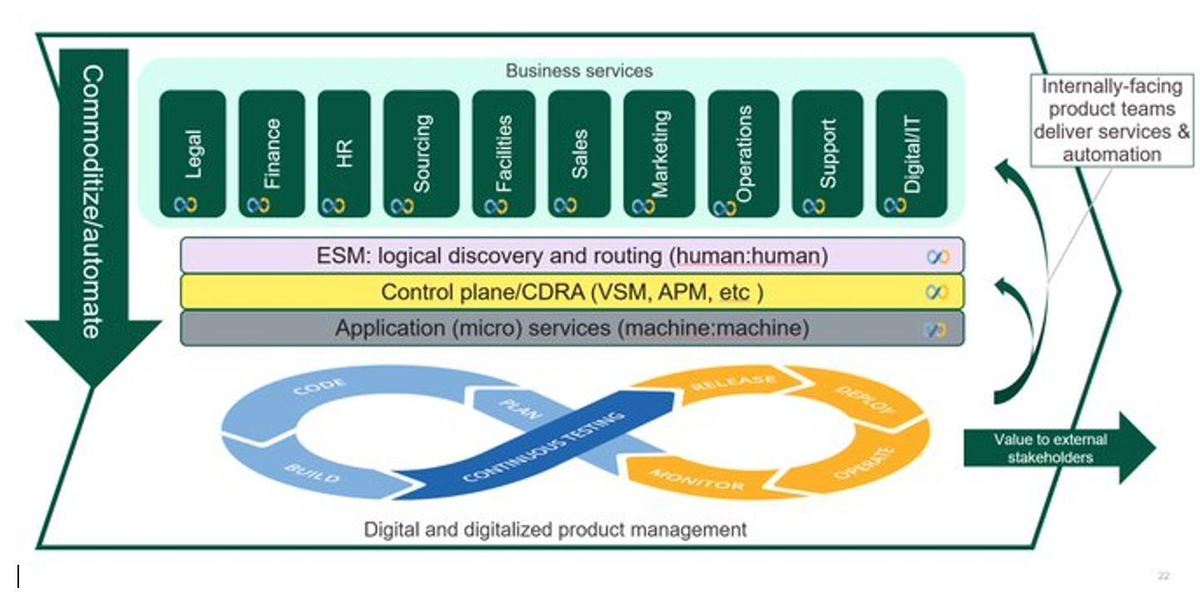IT Service Management (ITSM) has been around for long time. I remember when I started at Peregrine Systems learning that their original code base had been developed for the mainframe and that their data structure was pre-relational database.
It’s amazing to think that relational databases were actually invented after ITSM. Given this, we could consider ITSM to be Gen X. And while ITSM and the Information Technology Infrastructure Library (ITIL) have been updated over the years, do they stack up against Gen Z approaches like devops? This was the question that I posed recently to the #CIOChat.
Can CIOs shape their ITSM and devops implementations?
CIOs claim they can shape their ITSM and devops. Former CIO Mike Kail, for example, suggested that “CIOs absolutely should own and be influencing both.” Former CIO Isaac Sacolick agreed but said, “I don’t like saying the CIO owns it. ITSM is a responsibility and devops is a culture with a set of practices. CIOs should guide the outcomes from each.”
[ Career roadmap: How to become an enterprise architect ]
Sacolick went on to say, “the CIO should be setting the values and principles and their teams should respond with which practices, instrumented at what proficiency, and with what KPIs best fit. This applies to both ITSM and DevOps.” CIO David Seidl said he would phrase it as “be responsible, but it’s good to engage the experts to have ownership.”
Can these approaches be made congruent with each other?
Like Sacolick, Kail suggested, “ITSM is a framework and devops is a cultural approach. The core tenets of devops include culture, automation and measurement.” Kail says that “sharing can help modernize ITSM frameworks, policies and approaches.”
Charlie Betz, principal Forrester analyst for ITSM and devops said, “I prefer continuous delivery, lean product development, and organization and culture focus.” In terms of the relationship between devops and ITSM, Betz provided the below working concept which he suggests is not completely baked.

Digital product management: Understanding the relationship between devops and ITSM.
Former CIO Tim McBreen added that he prefers to “look at evolution of the various frameworks as input to the hybrid approach that works for each particular business. Certain organizations need more things out of ITSM, and others need more things out of devops. I prefer to evolve a working hybrid of all the frameworks.”
[ Related: ITIL 4: ITSM gets agile]
“ITSM and devops can coexist. There are, however, ITSM practices that devops can change significantly and for the better,” Sacolick added, coming back to the original question. For example, he suggested that “IT change management is still very important, but with devops, there is less need for a change advisory board (CAB). There are ITSM practices that devops can change for the better.”
Enterprise architect Dan Collins concluded this discussion by saying that “ITIL and ITSM are not something that can be made congruent with devops, but I am a firm believer that devops principles can be applied to just about any IT problem and the result might not be better, but if it isn’t it should be clear why, which begs a new approach.”
How to change ITSM to become more customer centric
CIOs believe this is a function of people. “Customer centricity always starts with people,” Sacolick said. “Who are your customers and what do they need and value? Process and technology always follow.”
[ Related: How to combine project management and collaboration ]
Kail agreed and said, “customers are people, so in order to be customer centric, your people need to understand how to relate to, be empathic with, properly communicate with, and generally understand people. With this, processes and technology can help augment.”
Unfortunately, many organizations start with ITIL processes and then technology instead of people. For this reason, McBreen said, “our customers just want value and a great experience. They don’t care what process, methodology and approach you use. I make sure that nobody in IT uses ITIL/ITSM, devops, or any other process name or terms with the user. That’s another reason why I build a hybrid.”
Healthcare CIO Michael Archuleta applies McBreen’s thinking to the businesses customers. “My new CEO is the patient Value is no longer the differentiator for the customer when doing business with your organization. It’s now about the experience.”
How should ITSM change to better support devops?
“Especially for companies doing a lot of application development ITSM should be instrumented as disciplined practices under a devops cultural transformation,” Sacolick says.
Betz agrees and suggests “at the end of the day, it’s all just work. I continue to believe that unified work management would materially benefit practitioners across both development and operations. The segregation of task management equals overburden.”
Adding devops to your service management
It’s clear that you can and should teach an old dog a new trick after all. Devops principles can be applied to service management to make it better. It’s time for CIOs to show leadership and responsibility and bring these approaches together to drive a better IT for business stakeholders and even end customers.



